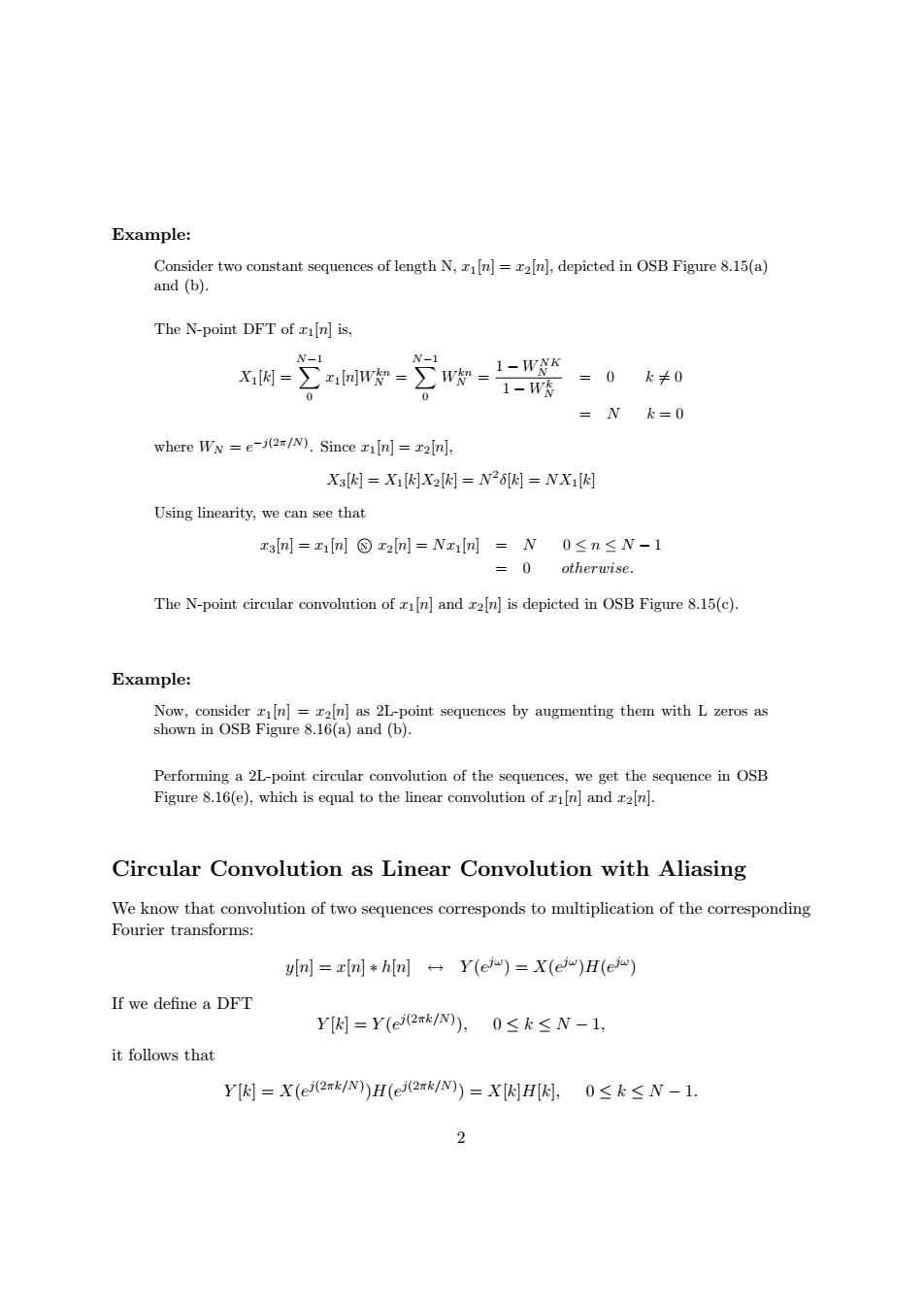正在加载图片...

Example: Consider two constant sequences of length N,1[n]=z2[n],depicted in OSB Figure 8.15(a) and (b). The N-point DFT of z1[n]is, x内=∑w-w=-w N-1 W-1 1-W =0k卡0 =Nk=0 where WN=e-i(2/N).Since ri[n]z2[n], X3[=X[X2附=N26[=NX[ Using linearity,we can see that x3m=xm回x2n=Nxln=N0≤n≤N-1 =0 otherwise The N-point circular convolution of i[n]and z2[n]is depicted in OSB Figure 8.15(c). Example: Now,consider z1In]=r2[n]as 2L-point sequences by augmenting them with L zeros as shown in OSB Figure 8.16(a)and (b). Performing a 2L-point circular convolution of the sequences,we get the sequence in OSB Figure 8.16(e),which is equal to the linear convolution of i[n]and z2[n]. Circular Convolution as Linear Convolution with Aliasing We know that convolution of two sequences corresponds to multiplication of the corresponding Fourier transforms: y[n]=x[n]*h[n]Y(ex)=X(e)H(ej) If we define a DFT Y[=Y(e(2πk/N),0≤k≤N-1, it follows that Y[=X(e2mkN)H(eJ2mkN)=X[H[,0≤k≤N-1. 2� Example: Consider two constant sequences of length N, x1[n] = x2[n], depicted in OSB Figure 8.15(a) and (b). The N-point DFT of x1[n] is, N−1 N−1 1 − WNK Wkn = � Wkn = X N 1[k] = � x1[n] N N = 0 k = 0 1 − Wk � 0 0 N = N k = 0 = e−j(2π/N) where WN . Since x1[n] = x2[n], X3[k] = X1[k]X2[k] = N2δ[k] = NX1[k] Using linearity, we can see that x3[n] = x1[n] N x2[n] = Nx1[n] = N 0 ≤ n ≤ N − 1 = 0 otherwise. The N-point circular convolution of x1[n] and x2[n] is depicted in OSB Figure 8.15(c). Example: Now, consider x1[n] = x2[n] as 2L-point sequences by augmenting them with L zeros as shown in OSB Figure 8.16(a) and (b). Performing a 2L-point circular convolution of the sequences, we get the sequence in OSB Figure 8.16(e), which is equal to the linear convolution of x1[n] and x2[n]. Circular Convolution as Linear Convolution with Aliasing We know that convolution of two sequences corresponds to multiplication of the corresponding Fourier transforms: jω)H(ejω y[n] = x[n] [n] Y (e ) jω ∗ h ↔ ) = X(e If we define a DFT Y [k] = Y (ej(2πk/N) ), 0 ≤ k ≤ N − 1, it follows that Y [k] = X(ej(2πk/N) )H(ej(2πk/N) ) = X[k]H[k], 0 ≤ k ≤ N − 1. 2